Undoing the Myths About Varicose Veins
Misconceptions
Sometimes, patients resign themselves to living with twisted, reddish-blue or green networks of varicose veins that appear beneath the skin’s surface – often as they age. Unfortunately, many patients also fail to connect those spidery tangles with other debilitating aches and pains or even fear possible treatments. The vein specialists at MIIGS – Minimally Invasive Image Guided Specialists – want those patients to know that:
- Varicose veins have been the source of many old wives’ tales and a great deal of erroneous information.
- Sorting fact from fiction can make a huge difference in treatment options and achieving optimal results.
Myth 1: They’re Just Cosmetic
Nothing in the body is without purpose, and veins are no exception. While arteries and capillaries carry oxygen-rich blood from the heart to all parts of the body, veins return that oxygen-depleted blood back to the heart and lungs, where it is re-oxygenated. Every vein counts, and when some are unable to perform their task, the body protests. The more blood vessels that are involved, the greater the protest, or symptoms.
Myth 2: They’re All the Same
While varicose vein patterns may seem universal, they often differ by location and associated medical issues, with some more serious than others:
- Spider veins are usually small, thready, branching red or blue capillaries showing on the legs or face.
- Telangiectasias are red vein clusters showing on the face or upper body. These are larger than spider veins and may be the result of another medical condition, such as pregnancy, liver disease, some genetic disorders or viral infections.
- Venous lakes are small, dark, reddish-blue pimple-like bumps that form along the edges of the lips, face, neck and ears, usually on areas exposed to the sun.
- Reticular veins are visible blue or greenish feeder veins that have swollen due to blood pressure. They are most commonly seen on the legs.
- Varicoceles appear on the scrotum and may signal infertility issues.
- Hemorrhoids are veins or groups of veins that swell in the anal region.
Myth 3: People Cause Them
For many years, patients have blamed the cause of their varicose veins on everything from sitting with legs crossed to tight clothing and pregnancy. The truth of the matter is that for one reason or another, one or more valves within a vein has suffered damage and can no longer control blood flow. Vein specialists consider a number of conditions and behaviors when evaluating cause:
- Age. As with other parts of the body, blood vessel walls and valves simply wear out.
- Genetics. Often patients have a family history of vein issues, including missing valves, valve irregularities or weak vein walls.
- Weight. Excess weight usually increases blood pressure.
- Trauma. Injuries or prior surgeries can cause both short- and long-term circulatory problems.
- Static Positioning. Muscle tone and movement aid circulation. Standing or sitting in one position for prolonged periods of time can slow or even restrict blood flow.
- Pregnancy. Hormones released during pregnancy to relax joints and aid delivery also loosen vessel walls. Blood volume increases, too, raising blood pressure levels.
- Associated diseases. Some disorders cause associated swelling or high blood pressure that in turn damages vessel walls and valves.
Myth 4: They’re a Woman’s Problem
While women may be more likely to suffer from varicose vein issues due to the shifting hormones of puberty, birth control use, pregnancy and menopause, men also experience the telltale symptoms and complications:
- Itching.
- Pain or cramping in the legs.
- Achy, heavy sensation in the legs.
- Throbbing.
- Visible clusters or branching webs showing as blue, red or violet just beneath the skin surface.
- Large, visible, deep veins that show blue or green.
- Skin ulcers or rashes.
- Thrombophlebitis, or clotting in a vein.
Myth 5: They’re Untreatable
Many people believe varicose veins are just a natural part of the aging process with no feasible treatment options available. This belief usually stems from the misconception that varicose veins are not serious medical issues. However, numerous minimally invasive procedures are available for dealing with these veins. Before deciding on treatment, it is important to first understand the underlying cause of the varicose veins. Specialists rely not only on patient medical and family histories and physical exams but also on duplex ultrasound and sometimes venograms:
- Duplex ultrasound uses both traditional and Doppler sound waves to show blood vessels and surrounding tissues as well as blood flow.
- Venograms use contrast dye and X-ray to reveal blockages or other circulatory conditions.
MIIGS and Minimally Invasive Varicose Vein Treatment
MIIGS is the only center staffed by American Board of Radiology-certified interventional radiologists in the Alexandria region and one of only a handful in Louisiana. Our doctors specialize in helping even the most complex and difficult cases:
- Ninety percent of our patients are physician referrals.
- At least half of the patients we see are at risk for amputation.
- In most cases, we are able to treat those patients and achieve full recovery.
MIIGS vein specialists use a host of technologies that are minimally invasive, with little to no downtime. Our doctors are trained to perform procedures that use either radiofrequency or laser energy to force these problematic veins to close. Once shut, healthy veins begin to compensate for the lost blood vessels and eventually take over blood delivery. These minimally invasive treatment options require no major incisions and are relatively painless compared to vein stripping, allowing for an expedited recovery.
We understand that painful conditions cannot wait, so we offer same-day or next-day appointments. Our minimally invasive vein treatments focus on comfortable, convenient in-office procedures that minimize risk, pain and recovery time, and most insurance covers varicose vein treatment for medical purposes.
To schedule a consultation at our center in Alexandria, contact us at 318.528.7560 or submit an online contact form. In the meantime, check out our website, and meet our doctors. Our vein specialists live to see patients back on their feet, actively doing all the things they were meant to do.

